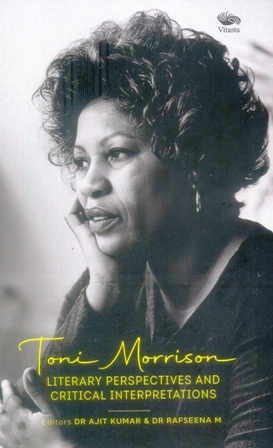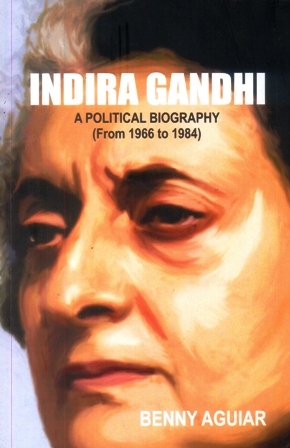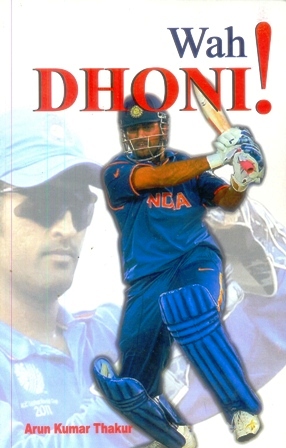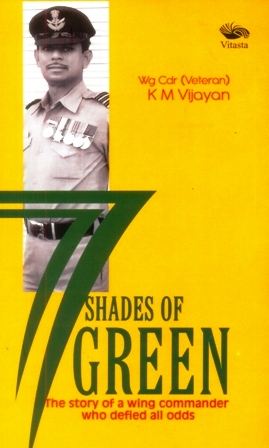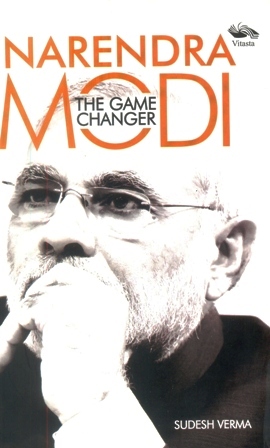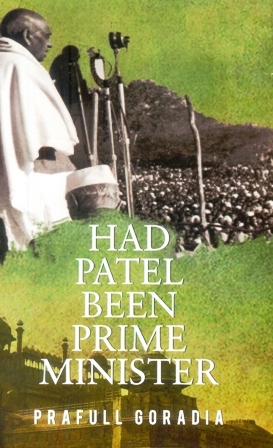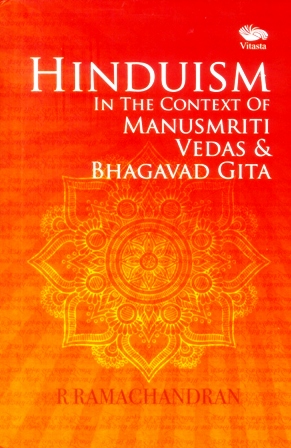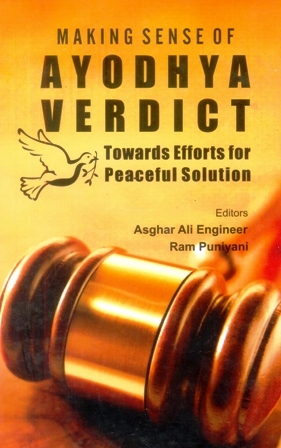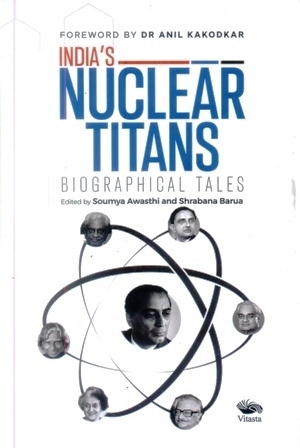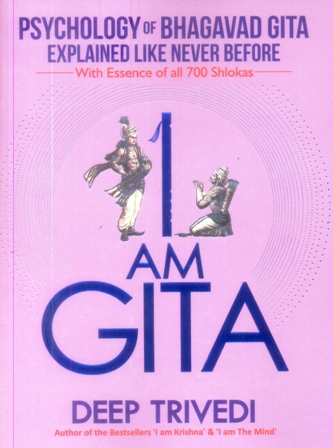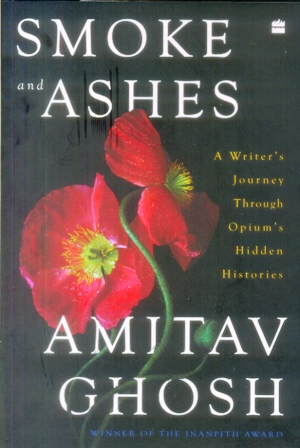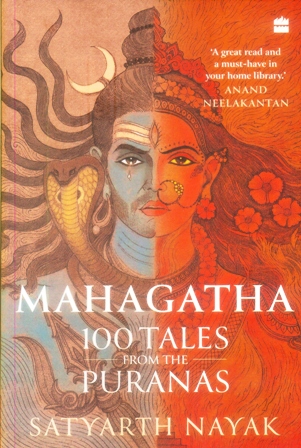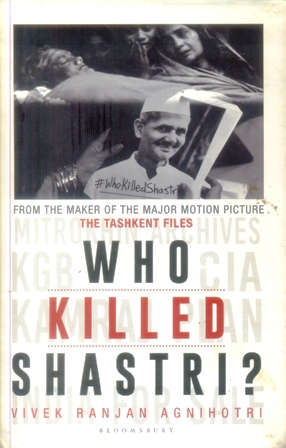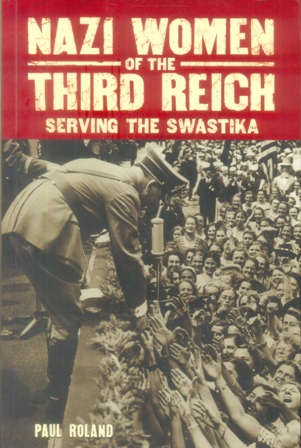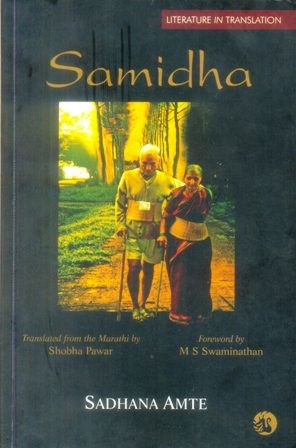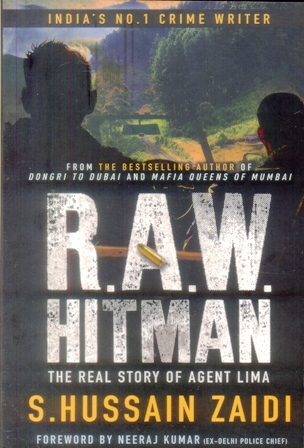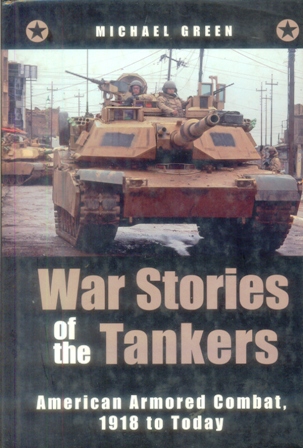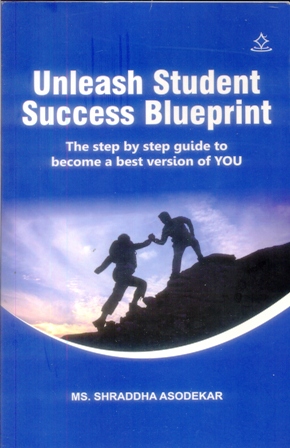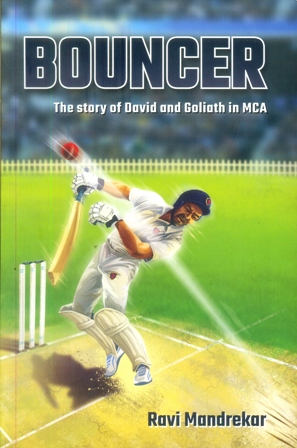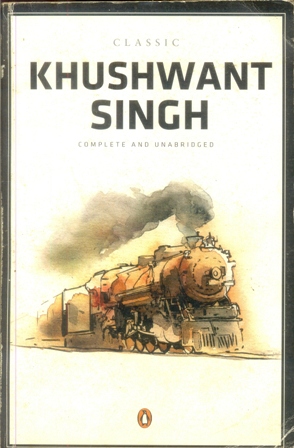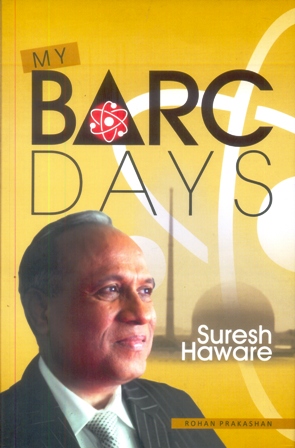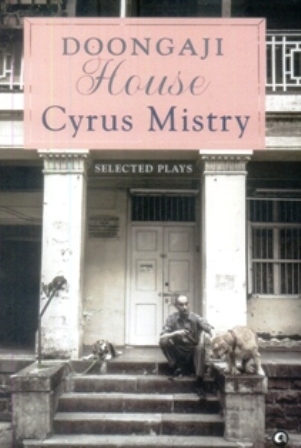-
Toni Morrison
Toni Morrison’s impactful works provide powerful commentary on the complexities of race, identity, gender, and power relations in the US. This edited volume, Toni Morrison: Literary Perspectives and Critical Interpretations, presents insightful critiques and commentaries by renowned academicians, researchers and scholars. It offers readers the opportunity to reflect on the lessons Morrison wanted them to learn and unlearn.
-
Indira Gandhi - A Political Biography
Twenty years after her death, study on Indira Gandhi still exercises an interest. A chronicle of the years between 1966 and 1984 during which, except for two or three years, Indira Gandhi was India's Prime Minister. The book is a historical study of the tumultuous events in which Indira Gandhi played a dominant role. The author has tried to piece together these momentous events into an integral narrative so that it reads like a story Father Benny Aguiar delves into his memory to write about the period when Indira Gandhi dominated the Indian politics. Indira became the Prime Minister of India in 1966 and remained so, barring the period 1977-79, till her assassination in 1984. She had a colossal presence and the history of India of this period got closely interwoven with her story. It is in this sense that the book is important. It is not a historical record of events, which many other books have already done. Father Aguiar recounts from his experiences of the period to produce an emotional history that helps understand the situation as it existed then. It is a close brush with reality and tries to make an assessment about the various feelings that shaped Indira s decision-making. He does not justify the Emergency but tries to understand why Indira Gandhi, who was a democrat, imposed a system that she was going to denounce when she came to power again in 1980. She spoke about the country needing a healing touch. Not in a thousand years, she said, would the need arise for another Emergency. Indira Gandhi was an enigma for most of her colleagues. She was politically smarter and could see through the events. This is why she upstaged most of them during her struggle for political survival. In doing so, she kept losing friends one after the other. Gradually her son Sanjay Gandhi was the only one she could rely on. The mother and son duo used to coordinate their activities for running the affairs of the country. But fate snatched away Sanjay from her and left her crest-fallen. She gathered the loose strings and began the task of governance. Indira Gandhi took tough and controversial decisions during her premiership. It is natural for people to dissect them post facto. A real understanding, however, will emerge only if the situation of that time is simulated. Father Aguiar tries to do that. This is probably for the fist time that a book tries to highlight the role played by various Christian organisations during the numerous crises facing the nation during this period whether it was the Emergency, riots, relief or rehabilitation. The book also talks of the meeting betweenVatican chief Pope John Paul II and Indira Gandhi.
-
Wah Dhoni!
one hurdle after another with a quiet determination, to reach the most coveted spot in national cricket, that is captaincy of Team India, in all three formats of the game. Unlike other books, where statistical details flood the pages, here they have been kept to a bare minimum. The attempt is to enable Dhoni's fans to know several hitherto unknown or unpublicized facts related to his younger and struggling days, his temperament, his family, his beliefs and the changes he has brought to the dressing room atmosphere - his story proves the axiom that champions do not depend on ideal conditions to reach the top, they rather adapt themselves and overcome the conditions made available to them - Indeed! this is the story of a local boy, who quietly dreamt big and went on to realize his dream - earning a permanent place in the history of Indian cricket, that too within such a short span of time.
-
77 Shades Of Green
77 shades of Green is about fortitude, resilience and defiance. An incredible true story of a wing commander from pre-independent India till today. This unique and fast-paced autobiography of hope and optimism gives first hand information about the 1962 indo-china war and the 1965 & 1971 India-Pakistan conflicts. Wing commander vijayan’s book chronicles the events starting from early 1940s, the birth and evolution of modern India and the Indian Air Force. Written in a distinctive style, this book offers a rich insight into the experiences of a person who lived through the decades of changes that defined a nation.
-
Narendra Modi The Gamechanger
Narendra Modi-The Gamechanger for the first time, Modi has been quoted in any book talking about the hitherto untouched aspects of his life. The book is based on extensive interviews of the Gujarat Chief Minister and his close relatives about the influences that shaped his thoughts and actions. The 400-plus pages talk about the inspiring stories that made Modi what he is today—how he evolved as a man of development and empowered people with his decisions, and how he faced the poison-laced barbs of his critics who were ready to tear him to pieces for a crime he never committed. Modi's journey from a tea-seller to becoming the prime ministerial candidate of the opposition National Democratic Alliance (NDA) has been one of struggle, dedication, determination, hard work and perseverance. Since his childhood, Modi has been an early riser. He does not go to bed until he has finished his work. An average Indian finds his own reflection in the struggle of Modi. Like Modi, he can dream big. Yes, he can! When he was a young boy of 13, he received a near-fatal injury due to attack by a crocodile in the Sharmishtha Lake he swam daily. He was bed-ridden for more than a week. “It hit like a sword on my ankle,” he said and showed to the author the scar he got due to the nine stitches. Modi was a victim of child marriage, a usual practice in the backward Ghanchi caste, but his desire to serve larger causes persuaded him to skip the final stage of the three-stage marriage. When he left home to become a wanderer in search of truth, he took formal leave of everyone, including his mother. The Modi family had ancestral links with Rajasthan. How Modis became a backward oil pressing community in Gujarat is baffling? Some say that the original backward Modis migrated from Bihar, where there are still people with the Modi surname in oil pressing trade.
-
Had Patel been Prime Minister
India repeatedly swears by democracy but we forget how undemocratically we selected our first prime Minister. Of the 16 Pradesh Congress committees across the country, 15 opted for Sardar Vallabhbhai Patel while one chose Acharya J B kripalani. This book asks the pertinent question, What if Sardar Patel had been India’s first prime Minister? Would India’s political and development trajectories be different it also discusses Patel’s thoughts on Partition and the East Bengal problem that finally led to the formation of Bangladesh. His views on independent princely states, on China and Communists and his views on planning and economic outlook are also explored. The IFS and buts of history are of course debatable. But was this a decision that changed the destiny of a nation and its people?.
-
Hinduism:In the Context of Manusmriti, Vedas and B
Hinduism is often difficult to comprehend due to its ancient origin, multifariousness, vastness and absence of one authority. No book on Hinduism, therefore, can be complete. This book, however, tries to attempt a well-documented and holistic view of Hinduism from historical and sociological perspectives. It intends to serve as a basic introductory text. The presentation is based on a first-hand reading of Hindu scriptures in Sanskrit combined with knowledge of social sciences. The emphasis is on three major Hindu scriptures: the `Bhagavad Gita', the `Manusmriti' and the `Vedas', particularly the Rigveda. These three texts constitute the basic framework of Hinduism. This book provides adequate information about the three scriptures and discusses in detail terms such as gotra, jati, varna and dharma. It also discusses the issue of divine punishment for violating the dharma. The book provides a detailed history of the origin of the culture and religion that flourished along the Indo-Gangetic Plains. It discusses migrations, their impact and the emergent civilizations. The objective is to understand how the religion evolved with people. It also studies the recent developments, particularly the impact of science and technology with regards to the Hindu society. Whether the Rigvedic values are relevant today have also been explored
-
Making Sense of Ayodhya Verdict
captures the background of archeological, historical and political aspects of the issue and lays the foundation of understanding the current debates. Tracing the evolution of the dispute and its political implications, the book goes on to present the intellectual atmosphere in the country post-judgment and gives a perspective about different facets of the consequences of the verdict. It gives the sample of the verdict by giving the major excerpts of the judgment, the opinions of all the three judges and the editorial opinions from different points of view. It includes the interviews of one of the judges, major intellectuals, writers and social activists. It also incorporates the chronology of events related to the dispute.
-
India’s Nuclear Titans
No nation debated more democratically than India on whether to get or give up nuclear power guns,’ writes George Perkovich, renowned American political scientist. Right from 1948, when the Atomic Energy Commission was established to the peaceful nuclear explosion in 1974, to Operation Shakti in 1998 when India went overtly nuclear, and then the Indo–US Civil nuclear agreement in 2005, every step was arrived at after much debate and deliberation. Rejecting discriminatory treaties like the NPT, taking a firm stand on the nuclear deterrence theory and standing up to superpowers despite heavy sanctions paved the way for India’s nuclear exceptionalism, thereby revealing not only the astounding brilliance and capability of the leaders and thinkers in the field but also India’s strong moral and ethical value system, which has played a major role in all its decisions. The book, India’s Nuclear Titans, traces the evolution of India into a nuclear state while analysing the role played by stalwarts like Homi Bhabha, Vikram Sarabhai, Abdul Kalam, Indira Gandhi, K Subrahmanyam, and Arundhati Ghose among others. Through interesting anecdotes from the lives of these great personalities, the book aims to give a brief but complete picture of India’s nuclear story.
-
I Am Gita
THE PSYCHOLOGY OF BHAGAVAD GITA EXPLAINED LIKE NEVER BEFORE! Moments before the Mahabharata war, Arjuna says, ‘I don’t wish to slay my brothers or commit violence just to gain a kingdom; even the scriptures forbid this!’ Are you in agreement with Arjuna? Why did Krishna disagree with Arjuna? Did Krishna incite Arjuna to fight the war or did he show him the right path? Can there be valid reasons for committing violence and waging a war? Who is right—Krishna or Arjuna? Why did it take Krishna all of 18 chapters to convince Arjuna? Certainly, Gita is one but the questions are many! And Gita is the epitome of psychology, as Krishna is the first psychologist of human history; and it is spiritual psychology alone that can accurately answer all the questions related to mind and life. Yet, the psychological aspects of Gita have always been ignored. ‘I am Gita’ is the first-ever book on Bhagavad Gita that elucidates the essence of all 700 shlokas along with its psychological and spiritual dimension in totality. In the book, Arjuna poses his questions in first person, and Krishna also answers in first person, which makes the conversation between Krishna and Arjuna come alive. Imparting the thrill of a story, the book, penned in a simple language, will help people of all age groups grasp the true essence of the Gita effortlessly. Deep Trivedi is the author of several bestsellers such as ‘I am Krishna’, ‘I am The Mind’, ‘Everything is Psychology’ and many more. He holds an international record for conducting 168 hours of workshops on the Bhagavad Gita. He has also been awarded with an Honorary Doctorate for his works on the psychology of Bhagavad Gita. This book is available in English, Hindi, Marathi and Gujarati at leading book stores and e-commerce sites.
-
Smoke And Ashes
Smoke and Ashes is at once a travelogue, a memoir and an excursion into history, both economic and cultural. Ghosh traces the transformative effect the opium trade had on Britain, India and China, as well as on the world at large. Engineered by the British Empire, which exported opium from India to sell in China, the trade and its revenues were essential to the Empire's survival. Upon deeper exploration, Ghosh finds opium at the origins of some of the world's biggest corporations, several of America's most powerful families and institutions, and contemporary globalism itself. In India the long-term consequences were even more profound. Moving deftly between horticultural histories, the mythologies of capitalism and the social and cultural repercussions of colonialism, Smoke and Ashes reveals the pivotal role one small plant has played in the making of the world as we know it - a world that is now teetering on the edge of catastrophe.
-
Mahagatha 100 Tales From The Puranas
Do you know the story where Brahma and Vishnu race against each other or where Shiva battles Krishna? Where Indra attempts foeticide or where Rama punishes a Shudra? Do you know about Maya Sita or Narada's monkey face? Or why Surya falls from the sky or why Chandra commits adultery? The Puranas of Hinduism are a universe of wisdom, embodying a fundamental quest for answers that makes them forever relevant. Now, for the first time, 100 of the greatest mythological tales from these ancient texts have been handpicked and compiled into an epic illustrated edition. Besides popular legends of devas, asuras, sages and kings, Satyarth Nayak has dug up lesser-known stories, like the one where Vishnu is beheaded or where Saraswati curses Lakshmi or where Harishchandra tricks Varuna. Nayak also recounts these 100 tales in a unique chronological format, beginning with Creation in Satya Yuga and ending with the advent of Kali Yuga. Using Puranic markers, he constructs a narrative that travels through the four yugas, offering continuous and organic action. In such a reading, it is revealed that these stories are not isolated events but linked to each other in the grand scheme of things. That every occurrence has a past and a future. A cause and effect. An interconnected cycle of karma and karma-phal. Delving into the minds of gods, demons and humans alike, Mahagatha seeks a deeper understanding of their motivations. The timelessness of their impulses speaks across the aeons to readers of today. Written in lively prose with charming illustrations, these 100 tales will entertain and enlighten, and make you connect the dots of Hindu mythology like never before.
-
Karmayogi - A Biography Of E.Sreedharan
Karmayogi is the dramatic and inspiring story of E. Sreedharan, the much-admired engineer and technocrat who won accolades for finishing the Delhi Metro project within budget and on time, in the face of severe constraints. Known for his efficiency and discipline and regarded the world over for his productivity standards, Sreedharan has, surprisingly, never spent more than the eight-hour workday in office. This fascinating book looks back on an extraordinary career full of sterling achievements-Sreedharan's years with the Railways, the building of the Kolkata Metro and the Konkan Railway, followed by the Delhi Metro, and the many metro projects he is involved with now. Translated from a bestselling biography in Malayalam, this is the uplifting story of a very private person who has become an icon of modern India because of his uncompromising work ethic.
-
Moby Dick
Moby Dick is the story of Captain ahab's quest to avenge the whale that 'reaped' His leg. The quest is an obsession and the novel is a diabolical study of how a man becomes a Fanatic. But it is also a hymn to democracy.
-
Who Killed Shastri?
It was the time of the Cold War. After defeating Pakistan in the second biggest armed conflict since the Second World War, Indian Prime Minister Lal Bahadur Shastri arrived in Tashkent, former USSR, to sign a peace accord. After days of extended negotiations, the peace agreement was signed between India and Pakistan in the presence of Alexei Kosygin, the USSR Premier. Hours later, at 1.32 AM, Shastri died in his dacha. Abruptly. Mysteriously. Soon after, his official Russian butler and the Indian cook attached to the Indian ambassador were arrested by the Ninth Directorate of the KGB under the suspicion of poisoning Shastri. No post-mortem was done. No confession was achieved. There was no judicial enquiry ever. It's been 50 years since his death, and we still don't know the truth. Was it really a heart attack? Was he poisoned? Did the CIA kill him? Was it the KGB? Was it a state-sponsored murder? Vivek Ranjan Agnihotri along with his motley team of inexperienced assistants turned whistle-blowers investigate the mystery behind Shastri's death and find themselves in a mirror-world where all and everybody is suspect. But they cannot remain distant, for the painful story of India touches their own lives as they discover how the country was put up for sale.
-
Nazi Women Of The Third Reich
• Four months pregnant, Vera Wohlauf, wife of a serving SS officer, took sadistic pleasure in rounding up victims for Treblinka. • Like creatures from a Grimms' fairytale, female members of a Nazi 'welfare' organization scoured the towns and villages of Poland and Slovenia, luring blond children out of hiding with bread and sweets. They were abducted to be raised as Germans by 'Aryan' families who told them their parents were dead. • Test pilot Hanna Reitsch flew on a suicide mission to rescue Hitler from his bunker. • Not even Hitler could resist the charms of Princess Stephanie, a femme fatale and Nazi agent who smoked cigars which she lit by striking a match on the heel of her shoes. The Nazis had no doubts about a woman's place in the Third Reich. Hermann Goering urged every woman to 'take a pot, a dustpan and brush, and marry a man.' Many women welcomed the arrival of Hitler's regime with childlike enthusiasm believing that the dictatorship would make Germany master of Europe, but as the war dragged on, their blind faith in Hitler was betrayed.
-
Samidha
A fairy tale romance and a blueprint for anyone who wants to venture into social service, this autobiography of Sadhanatai Amte – a woman who chose to marry a frenzied man and a dreamer, Baba Amte – is also a tale of her willing surrender in love without the slightest loss of her identity. It is a document of the dreams they dreamt for humankind and their struggle to put life into them. These memoirs present the portrait of a woman beside a man; a perfect consort who has the ability to tame the living storm, Baba Amte. Written without a stance, the distinctive simplicity of this transparent narrative, as compared to other similar writings by women, it has the power to stir its readers with its salty sea-air tang, and the warmth of a fruitful mad pursuit of a goal—at once personal and impersonal. A book like this – a saga of suffering, hopes, tensions and success, as well as the thrill of pleasure of work the two experienced while pursuing their goal – will serve as the beacon of light for posterity, and as a model in human relationships.
-
RAW Hitman
In September 2011, the double murder of gangsters Raju Pargai and Amit Arya rocked the Indian state of Uttarakhand. Pargai, who was well on his way to becoming a national security threat by smuggling weapons into India, had risen up the ranks of criminals quickly – but that also made him the target of Indian intelligence agencies, which then ordered the covert assassin named 'Agent Lima' to put him down. The day after the murder, Laxman ‘Lucky’ Bisht – an NSG commando who had also been personal security officer of politicians such as L.K. Advani and then CM of Gujarat, Narendra Modi – was arrested from his home in Haldwani, accused of the double murder. Thereafter begins a tale shrouded in mystery and suspense. Was Agent Lima and Lucky Bisht one and the same person? And if they were not the same person, why did Lucky Bisht languish in prison for more than five years, being transported from jail to jail, his bail application denied, while he was working for the government? Master thriller-writer S. Hussain Zaidi is back with a tale of intrigue and deceit in R.A.W. HITMAN: THE REAL STORY OF AGENT LIMA. Based upon true events, this is a book that will keep readers on their toes right till the end.
-
War Stories Of The Tankers
These are the war stories few can tell, the harrowing firsthand accounts of armored combat, from the days of the centurys first tanks to the latest encounter on the streets of Baghdad. Here are the still-vivid impressions of the brave young men who fought in the mud and trenches of no-mans land during World War I. Here are the stories of green American tankers taking on massive and well-armored German Tigers or fighting through a screaming sea of Red Chinese soldiers in Korea. And here are the personal tales of American tankers defending Western Europe from the threat of Soviet tanks during the Cold War. From the American boys who pitted their tanks against the Viet Cong in the jungles of Southeast Asia to the soldiers who put their lives on the line every day in Iraq, these are the heroes of our time, taking that rare moment to tell us what it is like to face the enemy in tank warfare.
-
Unleash Student Success Blueprint : The Step By St
Book is for students who find it difficult to cope up with their academics, by breaking the regular patterns and moving towards discipline by adapting the proper channels to over come anxiety against studies and unleash their potential to excel in their selected fields.
-
Classic Khushwant Singh
Khushwant Singh, one of India's most widely read and celebrated authors, has delighted readers for generations. This omnibus edition brings together all of Singh's novels-four classic of modern Indian literature. Following titles are: Train to Pakistan I Shall Not Hear the Nightingale Delhi Burial at Sea
-
My Barc Days
My BARC Days is a memoir of Dr. Suresh Haware’s inspirational journey from a remote village in India to becoming a nuclear scientist in India’s premier research organization Bhabha Atomic Research Centre (BARC). The book brings forth the author’s perspective of looking at difficulties as challenges and opportunities, and his intense passion for knowledge and research. His experiences span political events that affected the common man in India, days spent in educational institutions, work in BARC and also a Himalayan pilgrimage. Through detailed descriptions, the book gives a thorough understanding of life and work at BARC including a few milestones in the nation’s nuclear journey.
-
Doongaji House
Doongaji House: Selected Plays collects the finest plays of award-winning playwright Cyrus Mistry. Doongaji House won the Sultan Padamsee Award for Playwriting in 1978 and depicts the travails of a Parsi family living in a crumbling old mansion in Mumbai. The Legacy of Rage is a coruscating look at a dysfunctional East Indian family squabbling over their inheritance and the sweeping changes in society that have brought them to the edge of penury. A Flowering of Disorder, a play that is being published for the first time, is also set in Mumbai and goes deep into the problems, both farcical and profound, of a middle-class family attempting to cope with the challenges of living in a metropolis. Taken together, these brilliant plays expose the insecurities, frailties, and contradictions that lie at the heart of Indian middle-class society.

